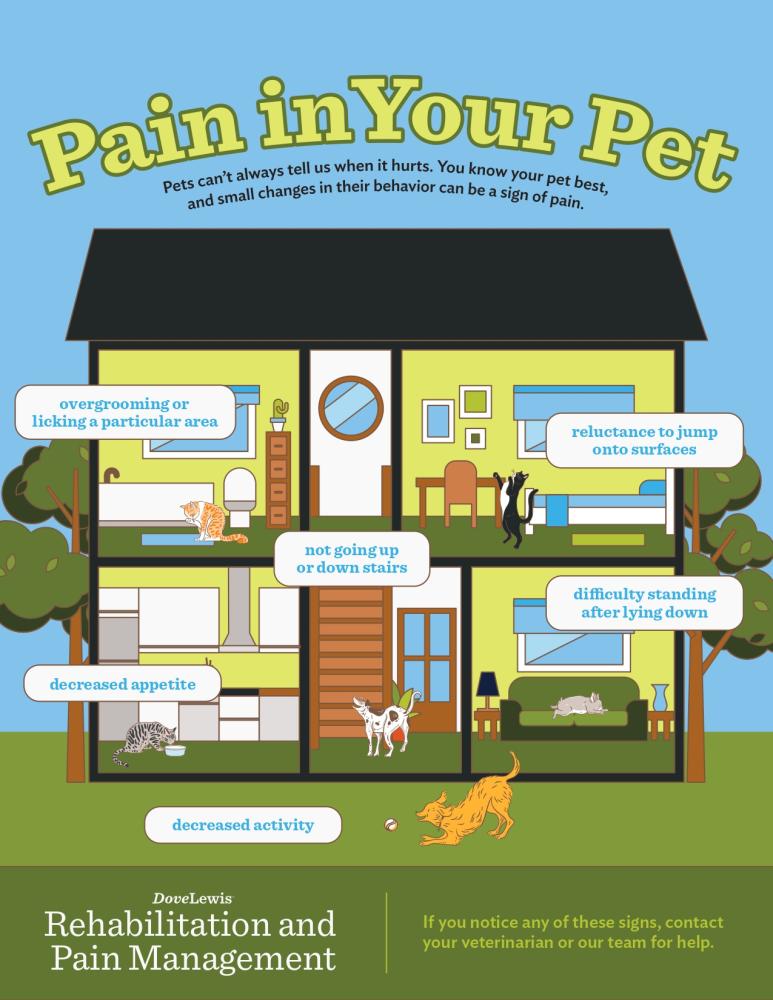
Is My Dog in Pain?
Recognizing when our dogs are in pain isn’t always easy. Their natural instinct to mask pain, combined with a desire to please, can lead them to push through activities they love—like running, playing fetch, or going for walks—even when they’re hurting. Because dogs express pain differently from humans, careful observation is key to detecting discomfort early.
Chronic vs. Acute Pain
Pain in dogs generally falls into two categories:
- Acute Pain: Sudden and often caused by injury or trauma, such as a wound, sprain, or post-surgical discomfort. Typically short-term and improves as the underlying issue heals.
- Chronic Pain: Long-lasting pain from conditions like arthritis, joint disease, or chronic inflammation. Often persistent enough to require ongoing management to maintain mobility and quality of life.
Using Canine Pain Scales
Veterinarians often use canine pain scales to assess discomfort, but at home, careful observation of behavior and activity is most practical. The International Veterinary Academy of Pain Management (IVAPM) offers pet owners helpful checklists for recognizing signs of pain. Pet owners can look for behaviors such as:
- Difficulty moving: trouble getting up or lying down, limping, moving more slowly, or difficulty jumping on/off furniture or into the car.
- Trouble navigating: difficulty on stairs or slippery floors.
- Reduced activity: less playing, exercising, or interacting with people or other animals.
- Restlessness or unusual positions: difficulty finding a comfortable position, sleeping differently, or pacing.
- Vocalization: whining, whimpering, groaning, or crying when touched or moving.
- Changes in behavior: hiding, resisting being handled, unusual aggression, or less interest in interaction.
- Overgrooming or irritation: excessive licking, biting, or scratching a body part.
- Appetite changes: eating less or showing reluctance to eat.

Assessing Your Dog’s Pain and What to Do
When you suspect your dog may be in pain, stay calm—anxiety can amplify their discomfort. Avoid palpating sore areas yourself, as this can worsen pain or trigger defensive behaviors. Instead, observe your dog carefully for subtle signs such as trembling, reluctance to move, altered posture, changes in appetite, or decreased energy.
If you notice mild pain—like limping, minor behavioral changes, or temporary reluctance to play—schedule a veterinary appointment to discuss your observations and explore options for relief.
If your dog shows severe or persistent signs—such as frequent hiding, refusal to eat, vocalizing when moving, or difficulty walking—seek veterinary care immediately. Early intervention is vital to prevent complications and help your dog regain comfort and mobility.
How DoveLewis Rehabilitation & Pain Management Can Help
At DoveLewis, our Rehabilitation & Pain Management service helps dogs regain comfort, mobility, and quality of life. Services may include:
- Physical Therapy & Hydrotherapy: Targeted exercises, including water treadmill sessions, to improve strength, flexibility, mobility, and joint function.
- Acupuncture & Laser Therapy: Non-invasive treatments to reduce pain and inflammation.
- Medication Management: Tailored pain relief for both acute and chronic conditions.
- Environmental & Lifestyle Guidance: Recommendations like ramps, supportive bedding, or activity modifications to enhance comfort at home.
By combining specialized therapies with expert veterinary care, dogs with chronic or acute pain can move more comfortably, play again, and enjoy a higher quality of life.
Recent Posts
Top Winter Care Tips for Your Pets
When you normally think of weather safety with your pets, you may naturally think of leaving animals in hot cars during summer. But did you know that cold weather also poses a serious threat to your animal's wellbeing?
Tips to Protect Your Pet This Thanksgiving
Gobble Gobble. Our furry friends would also love to partake in the feast and gobble up some food, but food-related injuries and illnesses are the main cause of pet emergencies over this holiday weekend. Learn what is most harmful and the best way to keep your pets healthy.




